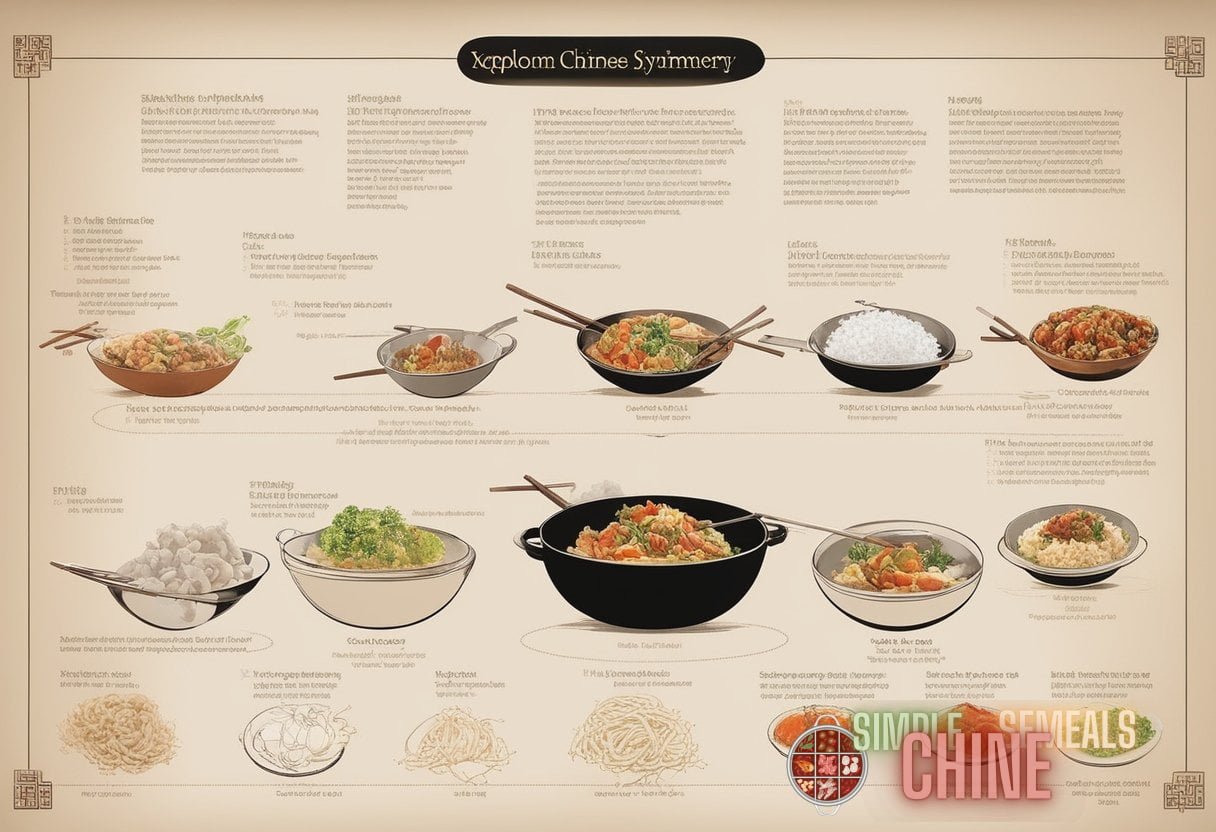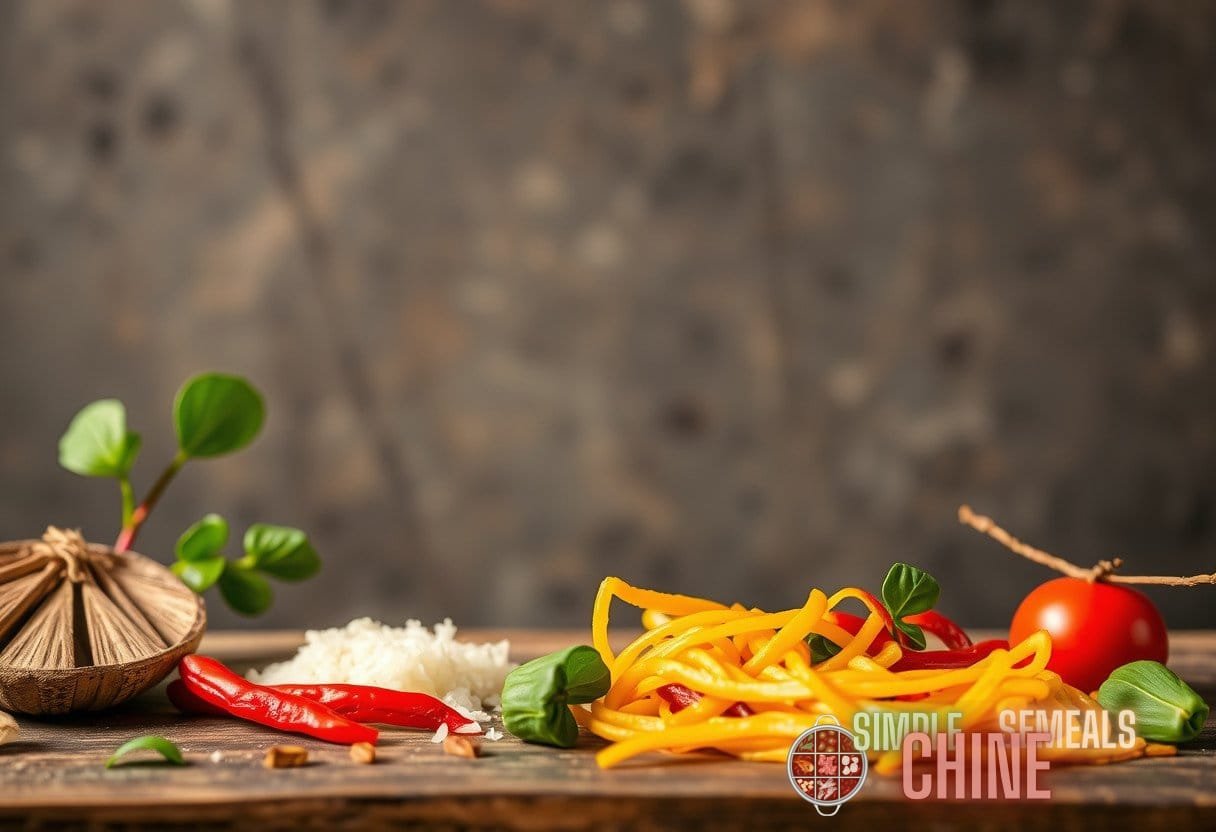Harmony in a Wok: The Science and Symmetry of Chinese Flavor Profiles
Chinese cuisine is renowned worldwide for its complex flavors, which are achieved through an intricate balance of ingredients and cooking techniques. In every traditional dish lies a symphony of tastes meticulously orchestrated to create a harmonious culinary experience.
The Philosophy of Balance
At the heart of Chinese cuisine is the concept of balance, deeply rooted in Traditional Chinese Medicine (TCM). According to TCM principles, food is categorized based on their flavors – sweet, sour, bitter, salty, and pungent – as well as their properties such as warming or cooling effects on the body. The idea is to achieve a balance within the body through diet, impacting one’s overall health and well-being.
This balance extends to cooking, where the objective is to harmonize these flavors to create a dish that is not only pleasing to the palate but also beneficial for health. Chefs meticulously measure and select ingredients to create this equilibrium, demonstrating a culinary tradition that is both an art and a science.
The Flavor Notes: Understanding the Five Tastes
Chinese cuisine is built around five basic flavor notes:
- Sweet: Typically derived from natural sugars found in foods like honey, fruits, and some vegetables.
- Sour: Achieved from ingredients like vinegar, tamarind, and certain citrus fruits.
- Bitter: Introduced using bitter melon, certain herbs, and spices.
- Salty: Often from soy sauce, salt, and preserved ingredients.
- Pungent: Adds elements of spice and heat from garlic, ginger, and chili peppers.
These flavors are not simply mixed randomly; they are balanced to complement each other. For instance, the sweetness can temper spiciness, and sourness can cut through richness, creating a multidimensional taste experience that is key to the appeal of Chinese cuisine.
The Role of the Wok
The wok is not just a cooking utensil; it is the essence of Chinese cooking. The design of the wok allows for high-heat cooking, which is essential for achieving the desired tastes and textures.
Here are a few aspects of why the wok is integral to Chinese cuisine:
Versatility: A wok can be used for various cooking methods including stir-frying, deep-frying, steaming, and boiling.
Heat Distribution: Its shape allows for even heat distribution and quick cooking, essential for locking in flavors and nutrients.
Flavor Development: The high heat of the wok enables the Maillard reaction, where amino acids and reducing sugars in food combine to create complex flavors and aromas.
For further insight into the critical role of the wok in traditional Chinese cooking, visit our article on Chinese Cuisine.
Key Ingredients Contributing to Flavor Harmony
Several staple ingredients embody the essence of Chinese cooking, each contributing to the flavor profile of dishes.
Soy Sauce: The Ultimate Umami
Soy sauce is a cornerstone of Chinese cuisine, providing a complex mix of salty and umami flavors that enhance many dishes. It is also available in various forms, including light, dark, sweet, and thick varieties, each with specific culinary uses.
Ginger and Garlic: Aromatic Foundations
Ginger and garlic are often used together as the aromatic base for many Chinese dishes. They bring pungency and a warming quality that is fundamental in stir-fries and braised dishes.
Sichuan Peppercorns: The Numbing Spice
Renowned for the unique numbing sensation they impart (known as “má là”), Sichuan peppercorns are a critical feature in many regional dishes, particularly in Sichuan cuisine.
Shaoxing Wine: The Sweet Elegance
This traditional Chinese rice wine is notable for its slightly sweet and nutty flavor, often used to deglaze pans and imbue dishes with added depth and complexity.
Oyster Sauce: The Sweet and Savory Marvel
With a rich, slightly sweet profile, oyster sauce adds a silky texture and depth when incorporated into stir-fries, marinades, and sauces.
Vinegars: The Tangy Balance
Chinese cuisine includes several types of vinegar, each with a distinct flavor profile. Black vinegar is noted for its malty depth, while rice vinegar is lighter and slightly sweet, contributing to balance in dishes.
Cooking Techniques Enhancing Flavor
Mastering Chinese cuisine involves more than just understanding ingredients; it also requires proficiency with specific cooking techniques that amplify and integrate flavors.

Stir-Frying
Stir-frying is perhaps the best known of all Chinese cooking techniques. It involves quickly cooking ingredients in a small amount of hot oil in a wok, promoting a crispy texture and vibrant color while preserving nutritional integrity.
Steaming
Steaming is favored for its health benefits as it cooks food gently, without the need for oil. Steaming is often used for fish, dumplings, and buns, preserving their natural flavors and nutrients.
Braising
Braising in Chinese cuisine typically involves long, slow cooking in a seasoned broth. This technique is ideal for tough cuts of meat, making them tender and infusing them with intense flavors from the liquid.
Deep-Frying
Deep-frying is used not only for texture but also for flavor development. Foods are often deep-fried to create a crisp exterior that contrasts with a tender interior, enhancing the overall taste experience.
Regional Variations in Flavor Profiles
Chinese cuisine is incredibly diverse, with regional variations adding to its richness. Each region has its distinct flavor profile, influenced by local ingredients, climate, and cultural traditions.
Cantonese Cuisine
Cantonese cuisine, originating from Guangdong province, is known for its subtlety and use of fresh ingredients. This region favors steaming, poaching, and stir-frying, often utilizing light seasonings to highlight the natural flavors of the ingredients.
Sichuan Cuisine
Sichuan cuisine is famous for its bold flavors, including the iconic “má là” (numbing and spicy) taste. This cuisine makes extensive use of chili peppers, garlic, and Sichuan peppercorns, creating dishes with intense aroma and heat.
Shandong Cuisine
Shandong cuisine features hearty, rich flavors and often employs deep-frying, braising, and roasting. This northern Chinese cuisine is known for its use of wheat-based products like noodles and buns.
Anhui Cuisine
Anhui cuisine focuses on rustic mountain herbs and wild plants, paired with simple techniques like stewing and braising to create comforting, earthy flavors.
For a deeper dive into the diversity of Chinese cuisine and how different regions contribute to the overall landscape of Chinese flavors, check out our article on Authentic Fusion.
Scientific Insights into Flavor Chemistry
To truly appreciate the harmony in a wok, it’s essential to understand the underlying chemistry of flavor. The interaction of molecules during cooking and their impact on our sensory perception forms the foundation of the culinary elegance witnessed in Chinese gastronomy.
The Role of Umami
Often referred to as the “fifth taste,” umami is a crucial component in many Chinese dishes. Glutamate, an amino acid prevalent in soy sauce, mushrooms, and meats, is a key contributor to umami. This taste enhances the depth and complexity of flavors, making dishes more satisfying to the palate.
Maillard Reaction and Flavor Development
The Maillard reaction is responsible for the browning and complex flavors that develop during high-heat cooking, such as stir-frying and grilling. When amino acids and reducing sugars react at elevated temperatures, they form new flavor compounds and aromas, creating the savory, caramelized notes characteristic of many Chinese dishes.
Capsaicin and Heat
Capsaicin, the compound responsible for the spiciness of chili peppers, plays a significant role in many Chinese regional cuisines, especially Sichuan. Capsaicin binds to receptors in the mouth, creating a sensation of heat and increasing salivation, enhancing the overall flavor experience.
Fermentation and Flavor Complexity
Fermented ingredients, such as soy sauce, black beans, and Shaoxing wine, are pivotal in adding complex, layered flavors to Chinese cuisine. Fermentation breaks down proteins and carbohydrates, producing a wealth of taste-active compounds that contribute to umami, pungency, and a rich aroma.
Conclusion
The science and symmetry behind Chinese flavor profiles create a unique culinary experience that is as delightful as it is complex. The harmonious balance of the five tastes, combined with the artful use of a wok and traditional cooking techniques, result in dishes that are both delicious and nutritious. By understanding the scientific principles at play, we gain a deeper appreciation for the flavors and cultural significance embedded in every bite.
Whether exploring regional variations or examining the chemistry of umami and the Maillard reaction, it’s clear that creating harmony in a wok involves meticulous attention to detail and a profound understanding of both art and science. For those fervent about experiencing authentic Chinese flavors, visiting this guide and exploring intricate regional profiles through fusion cuisines offers a gateway to the heart of Chinese culinary traditions.



